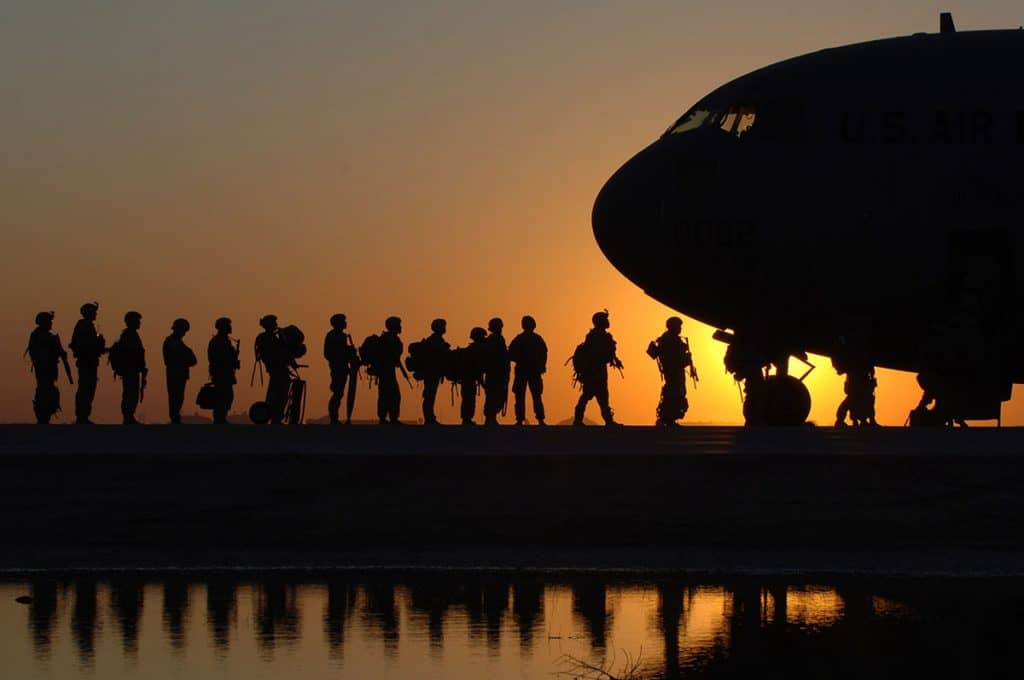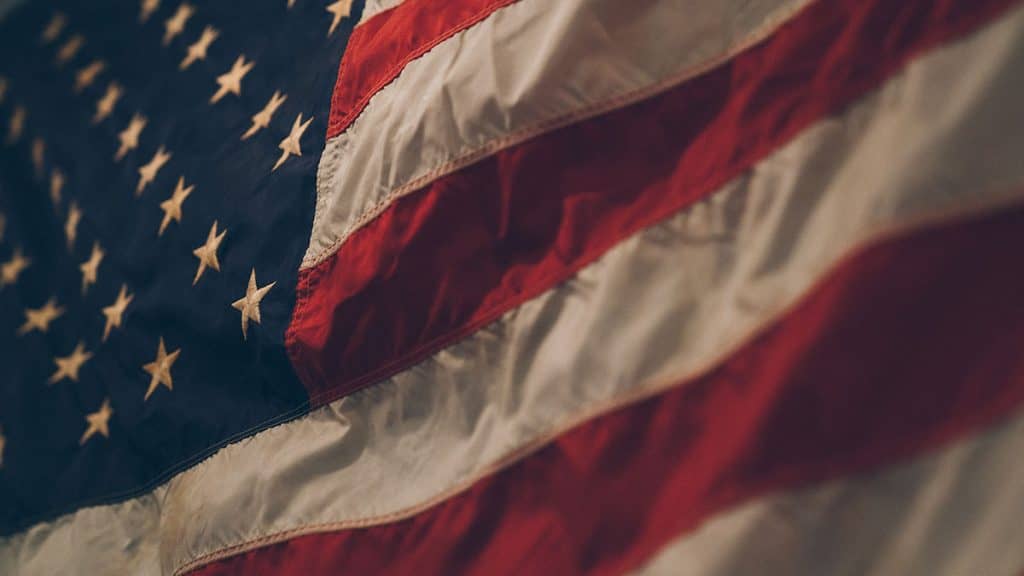Thousands of U.S. veterans struggle with addiction. In 2013 alone, one in every 15 of our veterans had a substance use disorder (SUD). Still, there is hope. As the public continues to gain awareness, more and more treatment options are becoming available to help American heroes combat their addictions.
Veterans of the Armed Forces
The U.S. Armed Forces consist of five service branches: the Army, the Navy, the Air Force, the Coast Guard, and the Marine Corps.

In each of these branches, there are three major categories of military personnel: active-duty sailors and soldiers, guard and reserve members, and veterans. Of these, veterans are the only military personnel who are retired from service.
This page will be focusing on the growing addiction trends among veterans as well as various treatment options for them.
Drug and Alcohol Addiction in Veterans
“Alcohol use disorders are the most prevalent form of SUD among military personnel? [and misuse] of prescription drugs, such as opioids, is on the rise among veterans.”
-excerpt from Substance Use Disorders in Military Veterans: Prevalence and Treatment Challenges
While it is true that anyone can develop a dependence on drugs or alcohol, substance use disorders seem to be exceptionally prominent among veterans of the U.S. Armed Forces. In fact, statistically, addiction appears more often in these veterans than in the general population.
The Office of National Drug Control Policy (ONDCP) and The National Institute of Drug Abuse (NIDA) have determined that exposure to violence in combat can influence the decision to use drugs or alcohol.
Most of the time, veterans develop addictions to alcohol, prescription drugs, or certain kinds of illicit drugs after turning to these substances to cope with feelings fear for their personal safety and wellbeing.
Young adult veterans are especially prone to substance use disorders.
Several studies show that roughly 25 percent of veterans aged 18 to 25 meet the criteria for a substance use disorder. This is more than double the rate of veterans aged 26 to 54 and five times the rate of veterans 55 or older.
Veterans and Alcoholism
Alcohol abuse is the most common form of addiction among military veterans. Almost ten percent of veterans abuse alcohol every week.
One study from The Journal of the American Medical Association (JAMA) revealed that 53 percent of veterans who return home after combat subsequently engage in binge drinking.
A separate study from the National Survey on Drug Use and Health (NSDUH) even found that veterans were significantly more likely to abuse alcohol than non-veterans (57 percent versus 51 percent).

Veterans and Prescription Drug Abuse
In recent years, prescription drug abuse has become a national public health crisis. While the rate of prescription drug abuse among civilians is high, it is significantly higher among veterans.
Opioids, which are incredibly addictive, are often prescribed to veterans to treat chronic issues such as migraines or pain.
From 2001 to 2009, the number of veterans who held opioid prescriptions increased by seven percent. At the same time, the number of pain medication prescriptions provided by military physicians more than quadrupled.
Moreover, according to NIDA, the rates of prescription drug abuse among veterans reportedly doubled between 2002 and 2005. Then, between 2005 and 2008, these rates tripled.
Veterans and Illicit Drug Abuse
Illicit drug use is not very common among veterans. For the most part, the use of drugs like cocaine, heroin, methamphetamine, and even marijuana are low among both male and female veterans.
According to a 2008 survey by the Department of Defense (DoD), less than three percent of military personnel use illicit drugs. Meanwhile, 12 percent of civilians have used an illegal substance in the past month.
Still, overall drug use among veterans is on the rise and has been over the last decade.
Mental Health Disorders Among Veterans
The psychological repercussions of military service can have just as tremendous an impact as the physical ones. In fact, mental health issues like post-traumatic stress disorder (PTSD), anxiety, or depression seem to be the most prominent among veterans of the U.S. armed forces.
The Drug Policy Alliance Annual Report of 2009 even found that roughly 30 percent of military veterans who served in Iraq and Afghanistan were subsequently diagnosed with one of these three conditions.

Veterans and PTSD
Post-traumatic stress disorder (PTSD) is a psychological condition that manifests as the result of a traumatic event. Reports from the National Institute of Mental Health (NIMH) show that PTSD is a condition that affects as many as eight out of every 100 people.
This particular condition is exceedingly common among veterans, especially ones who have seen or experienced shocking, frightening, or dangerous things firsthand during combat.
Symptoms that veterans with PTSD may experience include:
- Paranoia
- Insomnia
- Mood swings
- Guilt (i.e., survivor guilt)
- Low self-worth or self-esteem
- Self-destructive thoughts or behavior
- Upsetting memories, thoughts, or feelings
- Behavioral changes (aggression, irritability, etc.)
- Distressing recollections (flashbacks, nightmares, etc.)
- Cognitive issues (trouble concentrating, memory problems, etc.)
Typically, PTSD symptoms appear within three months of the traumatic event. However, in some cases, they can appear much later- even years after the traumatic incident.
Factors like age, gender, and environment can also influence both the development and severity of this mental health issue.
Veterans and Anxiety
Most people think of anxiety as a normal feeling of discomfort or dread. However, anxiety is a term that describes a wide range of psychological disorders- all of which are common in one-third of U.S. adults.
The most well-known anxiety disorders are generalized anxiety disorder, panic disorder, and phobia-related anxiety disorders.
Some of the overarching symptoms of these disorders include:
- Nausea
- Sweating
- Trembling
- Dizziness
- Restlessness
- Lightheadedness
- Excessive worrying
- Difficulty concentrating
- Feelings of impending doom
- Feelings of not being in control
- Jumpiness (i.e., feeling “on-edge”)
Veterans can experience any form of anxiety. However, they seem to be especially susceptible to panic disorder.
Veterans and Depression
Like anxiety, depression is an umbrella term that covers more than one psychological or mood disorder. In this case, depression can refer to psychotic depression, persistent depressive disorder, major depressive disorder, and other similar conditions.
Common symptoms for various forms of depression include:
- Sadness
- Pessimism
- Helplessness
- Hopelessness
- Fatigue or low energy
- Changes in appetite, weight, or both
- Little or no interest in beloved activities
- Suicidal thoughts, feelings, or tendencies
Depressive disorders are about as common in veterans as PTSD.
Veterans and Co-Occurring Disorders (Dual Diagnosis)
A dual diagnosis is when a person struggles with addiction and another mental health issue at the same time. Co-occurring disorders are very common, especially among those with a history of mental illness.

So, veterans who struggle with addiction are most likely also struggling with another mental health issue, like the ones outlined above.
It’s also worth noting that veterans who have a substance use disorder are three to four times more likely to be concurrently diagnosed with PTSD, depression, or both. This is especially true for veterans who have seen combat during their service.
PTSD and Alcoholism
“PTSD is diagnosed after a person experiences symptoms for at least one month following a traumatic event. However, symptoms may not appear until several months or even years later.”
–The Anxiety and Depression Association of America (ADAA)
PTSD and alcohol use disorder frequently co-occur, especially in veterans. In fact, people who struggle with PTSD are more likely to self-medicate with alcohol than with any other drug.
According to the National Center for PTSD, about 27 percent of veterans who have PTSD go on to develop an addiction to drugs or alcohol. That’s more than two in every ten soldiers.
The National Center for PTSD also asserts that 80 percent of Vietnam War veterans have alcohol abuse issues. That’s four in five veterans struggling with both PTSD and alcoholism.
Anxiety or Depression and Prescription Drug Abuse
While not all prescription drugs are inherently addictive, certain medications have a higher-than-average potential for abuse.
Veterans who struggle with anxiety, depression, or both often use prescription medication to cope with their symptoms. Naturally, misuse of prescription medications can lead to tolerance, physical or psychological dependence and, eventually, addiction and drug-seeking behavior.
The most addictive medications that are commonly prescribed to veterans include benzodiazepines, barbiturates, sedatives, and other central nervous system (CNS) depressants.
Veterans who use prescription opioids to treat chronic pain are especially at risk of developing a substance use disorder.
Increasing Demand for Drug and Alcohol Rehab for Veterans
Today, more and more people recognize the overwhelming need for effective veteran rehab programs. Thankfully, veterans seeking treatment now have more options than ever before.
Drug and Alcohol Treatment Options for Veterans
A wide variety of rehab programs exist across the country. Ideally, anyone struggling with addiction or dual diagnosis should utilize every level of care during rehab:
- Drug and alcohol detox
- Inpatient (residential) treatment
- Intensive outpatient treatment and partial hospitalization
- Outpatient treatment
Each of these levels of care offers different benefits that can help veteran patients get and stay sober.
Resources like Alcoholics Anonymous (AA) and Narcotics Anonymous (NA) are also helpful. Meetings are held in virtually every city in the U.S. each day.
Additional Resources for Veterans in Recovery
Veterans looking to enter rehab can also find treatment options through The U.S. Department of Veterans Affairs (VA), which owns and operates The Veterans Health Administration (VHA).
Additionally, each of the five branches of the U.S. Armed Forces provides addiction treatment resources directly to their personnel, including veterans. These are:
- Army Substance Abuse Program (ASAP)
- Substance Abuse Prevention Program (SAPP)
- Navy Substance Abuse and Rehabilitation (SARP)
- Marine Corps Community Services Substance Abuse Program
- Air Force Alcohol and Drug Abuse Prevention and Treatment Program (ADAPT)
The programs and services available through these government agencies are especially beneficial for veterans who need help finding affordable options.
Outcomes for Veterans in Recovery

Drug and alcohol addiction, as well as cases of dual diagnosis, are more common among veterans than the general civilian population. Still, early intervention and practical, personalized treatment can help improve their chances of long-term recovery.
Between 2003 and 2009, the U.S. saw a 56 percent increase in the number of soldiers and veterans entering rehab. Let’s work to continue that trend.
For more information about rehab and drug recovery options for veterans, contact us here or call us at (833) 369-6443.
References:
1 in 15 Veterans Had a Substance Use Disorder in the Past Year. (n.d.). Retrieved from https://www.samhsa.gov/data/report/1-15-veterans-had-substance-use-disorder-past-year
Air Force Medical Service: Health Promotion. (n.d.). Retrieved from https://www.airforcemedicine.af.mil/
Alcoholics Anonymous. (n.d.). Retrieved from https://www.aa.org
Anxiety Disorders. (n.d.). Retrieved from https://www.nimh.nih.gov/health/topics/anxiety-disorders/index.shtml
Army Substance Abuse Program (ASAP). (n.d.). Retrieved from https://home.army.mil/imcom/index.php/Organization/human-services/g1-personnel/asap
Depression. (n.d.). Retrieved from https://www.nimh.nih.gov/health/topics/depression/index.shtml
Home of JAMA and the Specialty Journals of the American Medical Association. (n.d.). Retrieved from https://jamanetwork.com
Jacobson, I. G. (2008, August 13). Alcohol Use and Alcohol-Related Problems Before and After Military Combat Deployment. Retrieved from https://jamanetwork.com/journals/jama/fullarticle/182376
MacLaren, E. (2018, November 23). What is Tolerance, Dependence & Addiction? | Drug Abuse. Retrieved from https://drugabuse.com/addiction
Marine Corps Community Services Substance Abuse Program. (n.d.). Retrieved from https://www.usmc-mccs.org/services/support/substance-abuse
Narcotics Anonymous. (n.d.). Retrieved from https://www.na.org
National Institute on Drug Abuse. (n.d.). National Institute on Drug Abuse (NIDA). Retrieved from https://www.drugabuse.gov
National Institute on Drug Abuse. (n.d.). Prescription Opioids. Retrieved from https://www.drugabuse.gov/publications/drugfacts/prescription-opioids
National Institute on Drug Abuse. (2018, March 06). Prescription CNS Depressants. Retrieved from https://www.drugabuse.gov/publications/drugfacts/prescription-cns-depressants
Office of National Drug Control Policy. (n.d.). Retrieved from https://www.whitehouse.gov/ondcp
Our Forces. (n.d.). Retrieved from https://www.defense.gov/Our-Story/Our-Forces
Post-Traumatic Stress Disorder. (n.d.). Retrieved from https://www.nimh.nih.gov/health/topics/post-traumatic-stress-disorder-ptsd/index.shtml
Public Affairs. (n.d.). What is the U.S. Opioid Epidemic? Retrieved from https://www.hhs.gov/opioids/about-the-epidemic/index.html
Substance Abuse Prevention Program (SAPP). (n.d.). Retrieved from https://www.dcms.uscg.mil/Our-Organization/Assistant-Commandant-for-Human-Resources-CG-1/Health-Safety-and-Work-Life-CG-11/Office-of-Work-Life-CG-111/Substance-Abuse-Prevention-Program-SAPP-Office-of-Work-Life-CG-111
Substance Abuse Rehabilitation Program (SARP). (n.d.). Retrieved from https://www.med.navy.mil/sites/nmcsd/Pages/Services/Substance-Abuse-Rehabilitation-Program-(SARP).aspx
Symptoms of PTSD. (n.d.). Retrieved from https://adaa.org/understanding-anxiety/posttraumatic-stress-disorder-ptsd/symptoms
Teeters, J. B., Lancaster, C. L., Brown, D. G., & Back, S. E. (2017, August 30). Substance use disorders in military veterans: Prevalence and treatment challenges. Retrieved from https://www.ncbi.nlm.nih.gov/pmc/articles/PMC5587184
U.S. Department of Veteran Affairs. (n.d.). Retrieved from https://www.va.gov
Veterans Health Administration. (2008, April 29). Veterans Health Administration. Retrieved from https://www.va.gov/health
Resources:
For additional resources and more information about rehabilitation facilities for veterans, please visit Veterans PTSD Resources.

